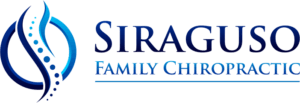Motor Vehicle Accidents and Personal Injuries
Motor vehicle accidents (MVA) and Personal Injuries (PI) are a major cause of spinal conditions treated by Chiropractors. Some conditions we treat include whiplash injury, headaches, cervical radiculopathy, sciatica, spinal instability, sprain/strains, facet syndrome, and muscle spasms. Symptoms from these conditions may arise even in a low force accident, where the patient does not have any symptoms initially, but may experience pain after the initial shock of the traumatic incident. It is important to seek chiropractic care as soon as possible, but only once serious injuries such as head trauma, fractures, contusions, hematomas, tears, or severe spinal cord injuries have been ruled out. Once these conditions have been eliminated chiropractic treatment should start immediately to reduce the risk of developing scar tissue, osteoarthritis, or chronic conditions.
Chiropractic Treatment of Motor Vehicle Accidents & Personal Injuries
Chiropractic treatment can vary depending on the injury that is sustained as well as the severity of pain. Chiropractic treatment can only begin once a full subjective and objective history is taken. The doctor will take x-ray images, perform orthopedic tests, range of motion tests, and MRS testing. Once the doctor has done a thorough examination a treatment plan will be established and treatment can begin. If the patient severity is only mild to moderate then chiropractic spinal manipulation will be performed on the patient to help restore proper joint motion, promote proper alignment, and reduce nerve stress and irritation. If the patient severity is moderate to severe then low force joint mobilization will be administered to avoid exacerbation of the patients symptoms. Once proper mobility and range of motion has been restored and the severity has decreased, then the doctor may progress to spinal manipulation. It is important that specific functional rehabilitation exercises are prescribed and performed at home. If the patient has trouble with the exercises, or is in a more severe state, then co treating with physical therapy may be recommended. Passive therapies may be performed as well, such as: Innerferential therapy, ultrasound, laser therapy, kinesiotaping, myofascial release, or dry needling. If the patient does not respond to Chiropractic treatment then it may be necessary to refer for imaging, orthopedic or neurological consult. This is at the discretion of the doctor.
Schedule an Appointment
If you or any of your loved ones would like to schedule an appointment Click Here!


